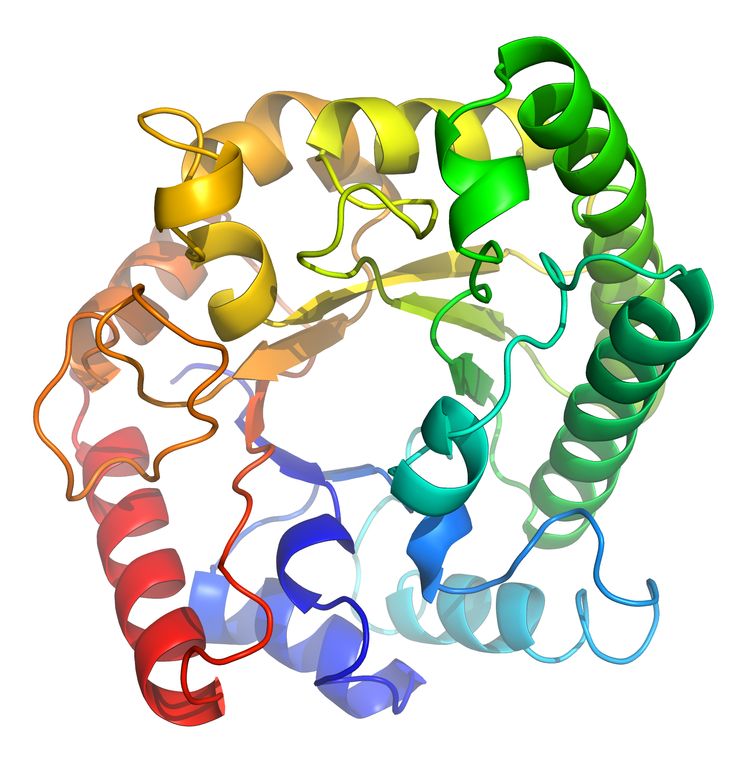Even though this question has been answered (and the answer accepted), I want to add something regarding scientific language and convention.
Language in general is a means of communication which allows people to share ideas they have inside their minds. Scientific language is used for sharing scientific knowledge between people, and apart from verbal and written communication, it also uses drawings of all kinds to better illustrate complex ideas that are usually invisible to the naked eye (whether we are talking about molecules in chemistry, biological microsystems in biology, forces in physics, etc.).
The image in question represents the conventional way of portraying a protein structure, and this widely-accepted convention is characterized by certain colors and shapes, as stated in the above answer. I imagine that anyone seeing this kind of representation for the first time would not know immediately that this is a computer rendition of a protein, because no one knows what a single protein looks like before actually studying about it. But once you are told it is a representation of a protein, you accept it and "tag" it in your mind, so that next time you see it, you already know this is what a protein "should" look like.
And the more you study it, the more natural this language becomes for you.

